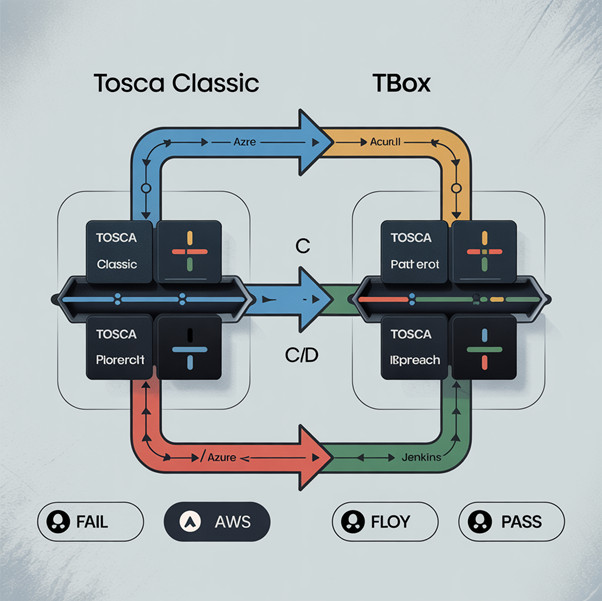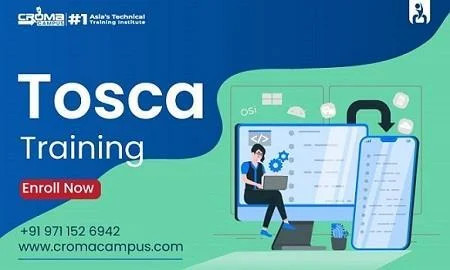What Is Tosca’s New TBox Engine and Why Is It Better Than the Old One?
Automation testing is getting smarter. Tools are becoming faster, lighter, and better at handling modern applications. One big change in test automation is Tosca’s switch from its old Classic engine to the new TBox engine.

Many testers who are taking Tosca Online Training hear about this change. But not everyone fully understands why TBox is better, how it works differently, and why companies are moving to it quickly.
This blog explains TBox in a simple yet technical way, with clear comparisons and real-world scenarios. We’ll also cover what makes it future-ready and why you should care as a test automation engineer.
How the Classic Engine Worked?
The Classic engine was the older part of Tosca. It worked well in its time. But it was built for simpler desktop and web apps. It used fixed properties, screen positions, and static control identification. If anything on the screen changed—like layout or element order—the tests could fail.
Classic relied on:
- Coordinate-based clicking
- Fixed control trees
- Basic synchronization
- Less flexibility with dynamic data
This made tests fragile and hard to reuse. Testers had to fix scripts every time the UI changed.
How Is TBox Different and Smarter?
The TBox engine is the new way Tosca works. It doesn’t care about screen size or exact positions. Instead, it uses dynamic properties to find buttons, fields, or other UI elements. It supports complex UIs, changing layouts, and even cloud-based apps.
Here’s what TBox brings technically:
- Uses property-based object recognition like “ID,” “Text,” “Class,” instead of location.
- Supports modular design, which means you can reuse parts across tests.
- Works across platforms: desktop, web, mobile, SAP, Citrix.
- Supports built-in wait conditions, so tests are more stable and reliable.
- Fully integrates with CI/CD tools like Jenkins and Azure DevOps.
- Comes with smart engines like XBrowser and XScan for better scanning.
TBox also supports TestCaseDesign and TestDataService, allowing easy data linking and model-based testing.
Technical Comparison Table
Below is a technical comparison between Tosca Classic and TBox:
| Feature | Tosca Classic | Tosca TBox Engine |
| Object Recognition | Static (fixed path) | Dynamic (property-based) |
| Platform Support | Mostly desktop/web | Desktop, Web, Mobile, SAP |
| Control Handling | Limited | Strong with XModules |
| Wait Mechanism | Manual waits | Smart Wait (auto) |
| CI/CD Integration | Partial/manual | Native/full |
| Data-Driven Testing | Basic link | Full TestCaseDesign |
| Reusability | Low | High |
| Script Maintenance | High effort | Low effort |
Real Scenarios Where TBox Makes a Big Difference
Let’s look at two real use cases where TBox shows its power.
Example 1 – Web App with Dynamic Tables
A team using Classic engine had test cases for a banking web app. Every time the UI changed the order of table columns, their tests failed. With TBox, they used dynamic column recognition using header text instead of column index. No more rework.
Example 2 – SAP Testing in a CI/CD Pipeline
A company in Germany used TBox for SAP GUI automation. They connected Tosca to Jenkins for nightly runs. TBox’s auto-sync and built-in waits reduced false failures by 80%. The Classic engine couldn’t handle dynamic SAP elements as efficiently.
These changes are pushing more testers to upgrade their skills and get Tosca Certification. Many advanced certification modules now focus only on TBox and its features.
Why TBox Matters for Future Testing?
Modern apps are fast-changing. They use JavaScript, AJAX, React, mobile frameworks, and virtual interfaces. Old testing methods can’t keep up.
TBox solves this by:
- Supporting multiple platforms in one framework.
- Allowing object steering without changing the model.
- Handling cloud apps like Salesforce, Workday, and more.
- Reducing test failures due to timing or layout issues.
- Connecting easily with API tests, database validations, and performance scripts.
If you’re learning Tosca now, make sure you spend time on TBox. It’s the engine future test teams will expect you to use.
Even for Database Testing Training, teams now prefer using TBox to build database verifications that plug into UI flows. Performance testers who train with Jmeter Certification can also integrate load conditions into Tosca workflows using TBox plugins.
Tosca Certification Cost is a small investment considering how many companies are moving to TBox-based automation. Most job roles now require working experience in TBox, not Classic.
TBox Use in Large-Scale Projects
In enterprise projects, TBox saves time. Here’s how it helps in real terms:
- Faster scanning and module creation
- Less maintenance of automated scripts
- Smooth integration into Agile sprints
- Built-in test data mapping
- Reusability across releases
Teams also use TBox to build modular test libraries. One login module can be reused across 20+ test cases. This wasn’t easy to do in the Classic engine.
Some companies create libraries in TBox standard modules and distribute them across global QA teams. This helps in standardization.

Conclusion
TBox is the future of Tosca automation – smarter, stable, and platform-ready. It uses dynamic control identification, unlike the Classic engine. TBox supports CI/CD, mobile, SAP, web, and hybrid apps. Helps testers create reusable, low-maintenance test modules. Companies prefer TBox for modern test architectures. Training in TBox is now part of most Tosca Certification paths. Works well with API, database, and even Jmeter workflows. Reduces overall test cycle time and failure rate in real projects.



Leave a Reply
Want to join the discussion?Feel free to contribute!